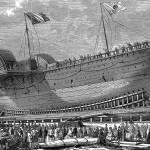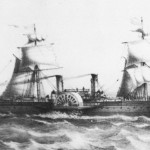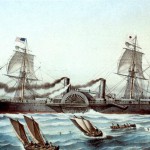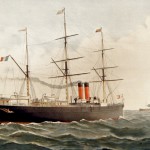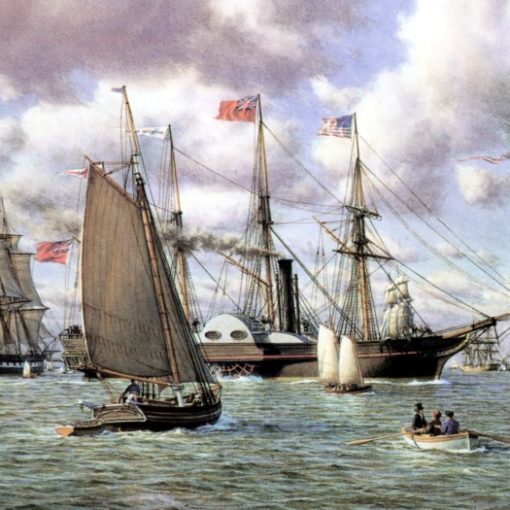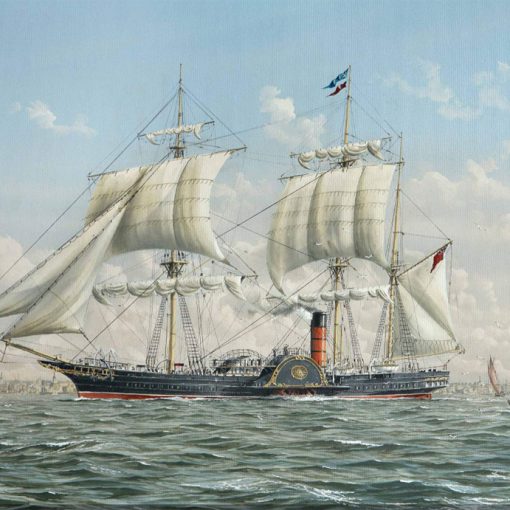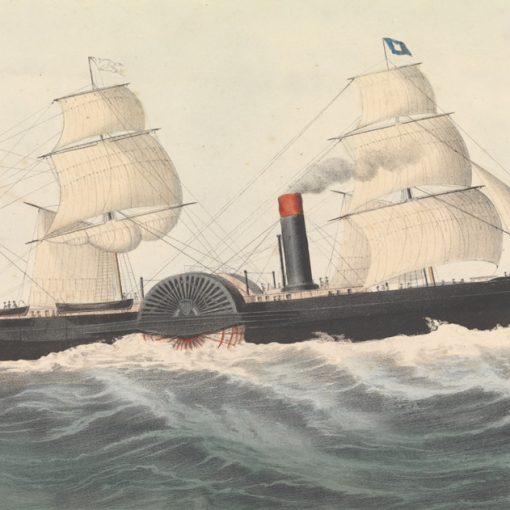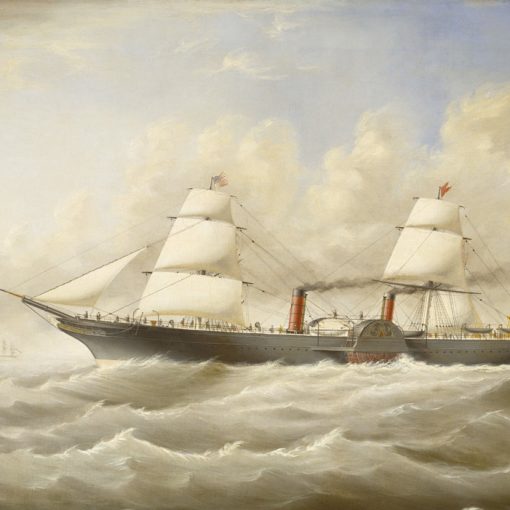1865 – 1895
Also known as Atlantique and Amerique
With the increasing rate of emigrants in the later half of the 19th century, many shipping companies were born. The British Cunard Line had been established since the 1840s, and now several American companies also came to life. Magnificent liners such as Cunard’s pioneer Britannia ruled the waves. One of the most respected ship engineers – and every other kind of engineer as well for that matter – was the Briton Isambard Kingdom Brunel. He created ships well ahead of their time with marvels such as Great Western and Great Britain. The most spectacular of his ocean liners was the enormous recordbreaker Great Eastern who emerged in 1860. She outmatched the second largest ship six-fold in size and the ship’s space and luxury were beyond measuring for the time.
One of the shipping companies that came to life after 1850 was the French Compagnie Générale Transatlantique who started business in 1861. The company’s first vessel, the Lousiane went out on her maiden voyage in 1862, on what was C.G.T.’s first Atlantic crossing. This started the Compagnie Générale Transtalantique’s glorious history that would last into the end of the 20th century.
The Lousiane had been built in Greenock, Scotland and after some years C.G.T. – or the French Line – felt it was time to start to build their own ocean liners in their own country. In 1862 the French Line ordered a new vessel called Atlantique from the Chantiers de l’Atlantique shipyard in Penhoët, St. Nazaire. The French still trusted their British shipbuilding companions, and the project was under the supervision of John Scott & Co., Glasgow. The Atlantique’s keel was laid on October 15 that year. About eighteen months later the ship was ready for her launching, but under a different name. It had been changed to Impératrice Éugenie and this French marvel with the title of being the first French trans-Atlantic liner to be built in France had cost an astonishing two million francs to construct, and that was the hull only. That was more than double the price of a British ship of the period, but the French Line had aimed on safety and the Impératrice Éugenie was equipped with thick one-inch hull plates.
The 1860s was a period when liners powered by engines and other ships were being converted from the conventional paddle wheel to the more efficient propeller. However, the Impératrice Éugenie was powered by engines geared to two giant paddle wheels. Each of the two had a diameter of nearly forty feet and together they were able to push the ship to a service speed of 11 knots. On February 16, 1865, the engines proved worthy when they served the Impératrice Éugenie on her maiden voyage between St. Nazaire and Vera Cruz in Mexico.
Even though the Great Eastern was the largest ship in the world with nearly 19,000 gross tons, the Impératrice Éugenie was not a small ship. At 3,400 gross tons she was actually quite large for her time and on May 5, 1866 she carried the largest load of passengers and cargo ever with 900 passengers, 500 tons of cargo and Fcs five million in specie. Four years later, the Impératrice Éugenie had been renamed back to her original Atlantique.
The Atlantique had two sisters altogether, all put into service later in 1865. They were the France and the Nouveau Monde. In 1873, the Atlantique and her sisters went to Maudsley & Leslie in order to be lengthened to 400 feet. After the job was completed, the ships were sent to London for re-engining by Maudlsey, Sons & Field. When the ships came back into service, without the paddle wheels, on January 16, 1874 they had had their tonnage increased to 4,600 each, and a third mast had been added to the two previous. For the second time the Atlantique was renamed, this time to Amerique. Now she would for the first time enter the route to New York.
Later in 1874, the most odd mystery occurred when the Amerique was abandoned in a gale 100 miles off Brest, France on April 14. The ship started to take on water much faster that the pumps could handle and all 83 passengers and 152 crew were hurriedly transferred to other ships who left the scene quickly and went to disembark the passengers in Plymouth. Everyone thought they had seen the last of what they considered a doomed liner. But not long afterwards two British ships were astonished to find the Amerique abandoned and drifting not far from her last reported position. It was seen to that she was pumped out on the spot and then she was sent – only slightly listing to starboard – to Le Havre for reparation work. The French Line was very surprised when they found out about this on April 19. The Amerique resumed service within a month.
In spite of that the Amerique seemed to be a lucky ship because of this incident, she was not immune to further damages. On January 7, 1877 she went ashore on the coast of New Jersey at Seabright. Because of financial problems the ship was not attended for in four months, but finally on August 11, she was back in service. On September 22, 1886 the Amerique was transferred to the Havana service. Six years later, the Amerique was once again re-engined, this time to very modern triple expansion engines by the C.G.T. yard at Penhoët. This alteration increased her service speed to 12 knots. The end of the Amerique came in 1895. She was bound for Havana on January 28, just outside Savanilla, Colombia when she was wrecked. The ship was considered too badly damaged and too old to put back into service and she was subsequently scrapped.
Specifications
- 364 feet (111.2 m) long originally, 400 feet (122.2 m) after 1873 refit
- 44 feet (13.4 m) wide
- 3,400 gross tons originally, 4,585 gross tons after 1873
- Two-cylinder simple expansion engines powering two paddle wheels. These were replaced with a single propeller in 1873. Re-engined with triple expansion engines during 1892 refit.
- 11-12 knot service speed
- Passenger capacity of approximately 900 people

